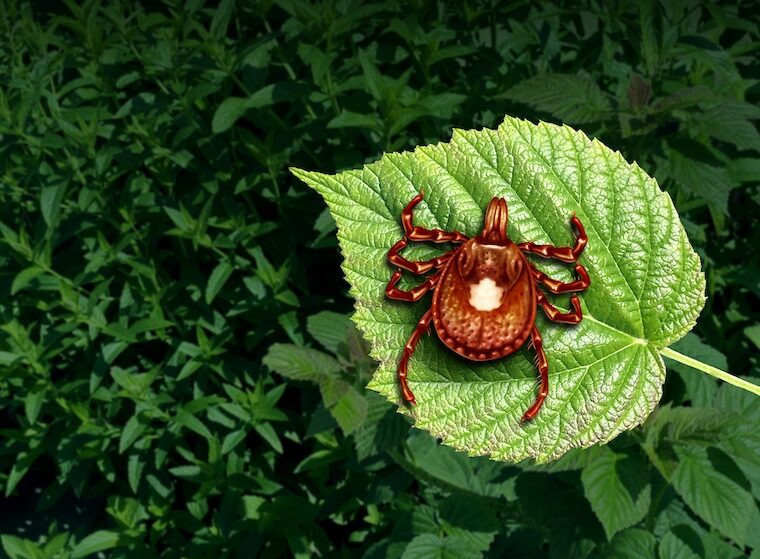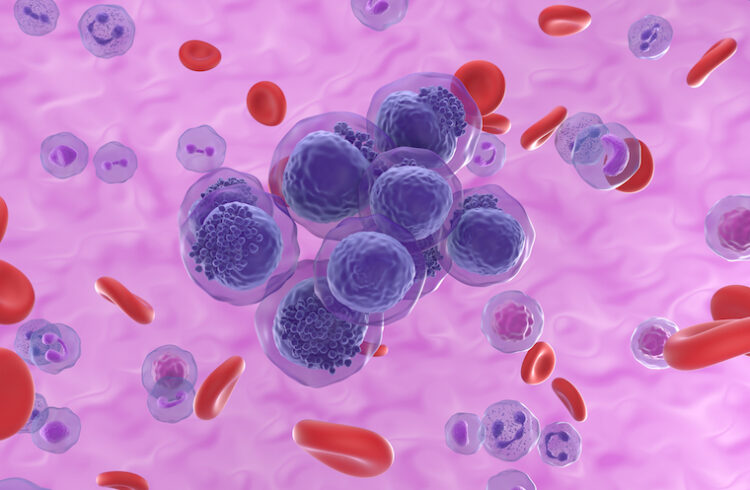
The bite of the Lone Star tick can trigger what is commonly called the "meat allergy" -- actually an allergy to a sugar found in mammalian meat.
School of Medicine researchers have identified the first death caused by what is commonly called the “meat allergy” being spread by ticks.
A healthy 47-year-old man from New Jersey died abruptly four hours after consuming beef. The cause of his death had been a mystery until UVA Health’s Thomas Platts-Mills, MD, PhD, investigated. A world-renowned allergist, Platts-Mills discovered the allergy and remains the foremost expert on it.
The allergy is caused by the bite of the Lone Star tick. Bites can sensitize people to alpha-gal, a sugar found in mammalian meat. People who become sensitized to the sugar can have allergic symptoms such as rash, nausea and vomiting after eating beef, pork or lamb. Researchers have feared that deadly anaphylaxis was possible in severe cases but had not confirmed a fatality from the allergy until now.
“The important information for the public is: First, that severe abdominal pain occurring 3 to 5 hours after eating beef, pork or lamb should be investigated as a possible episode of anaphylaxis; and, second, that tick bites that itch for more than a week or larvae of ticks often called ‘chiggers’ can induce or increase sensitization to mammalian-derived meat,” said Platts-Mills, former chief of UVA Health’s Division of Asthma, Allergy and Clinical Immunology. “On the other hand, most individuals who have mild to moderate episodes of hives can control symptoms with an appropriate diet.”
About the Meat Allergy Death
The New Jersey man, whose name was not released, had gone camping with his wife and children in summer 2024. One night they ate a late steak dinner at 10 p.m. The man woke at 2 a.m. with severe abdominal pain, diarrhea and vomiting. He recovered by morning, but he told his son he had thought he was going to die.
Two weeks later, still unaware he had contracted the meat allergy, he ate a hamburger at a barbeque. He started feeling ill after 7 p.m., and his son found him collapsed in the bathroom at 7:37.
An autopsy was inconclusive, with the cause reported as “sudden unexplained death.”
The man’s wife, however, remained unsatisfied. She asked a doctor to review the autopsy report; the doctor contacted Platts-Mills’ team to see if alpha-gal could have played a role.
Platts-Mills obtained samples of the man’s blood that had been collected post-mortem and found that he had been sensitized to alpha-gal. Further, the blood indicated the man had had an extreme reaction, in line with what is seen in fatal anaphylaxis.
When asked about his history of tick bites, the man’s wife said he had none this past year but had 12 or 13 chigger bites around his ankles this summer. Platts-Mills realized that many “chigger bites” in the Eastern United States are actually bites from Lone Star tick larvae.
Platts-Mills and his colleagues suspect that several factors may have contributed to the severity of the man’s reaction, including having a beer with his burger, exposure to ragweed pollen and having exercised that afternoon. Platts-Mills noted that the man’s family reported that he ate red meat very sparingly.
In the wake of the man’s death, Platts-Mills is urging physicians to be on the lookout for people who have developed the allergy or are at risk of exposure. He noted that the deer population is exploding in many states, and these animals are prime breeding grounds for the Lone Star tick that spreads the allergy.
“It is important that both doctors and patients who live in an area of the country where Lone Star ticks are common should be aware of the risk of sensitization,” Platts-Mills said. “More specifically, if they have unexpected episodes of severe abdominal pain occurring several hours after eating mammalian meat, they should be investigated for possible sensitization to the oligosaccharide alpha-gal.”
Findings Published
Platts-Mills and his colleagues have published the details of the case in the Journal of Allergy and Clinical Immunology: In Practice. The paper is open access, meaning it is free to read. It was written by Platts-Mills, Lisa J. Workman, Nathan E. Richards, Jeffrey M. Wilson and Erin M. McFeely.
The researchers obtained permission from the man’s widow before publishing their findings.
To keep up with the latest medical research news from UVA, subscribe to the Making of Medicine blog.



